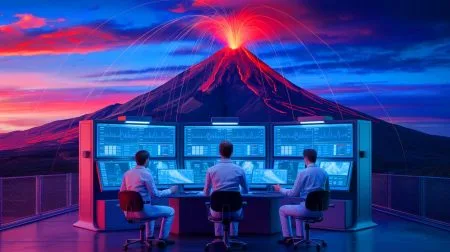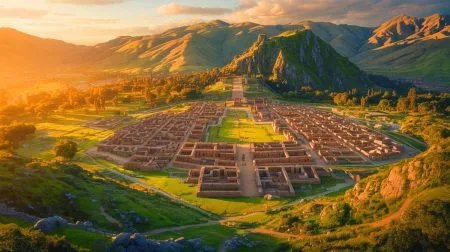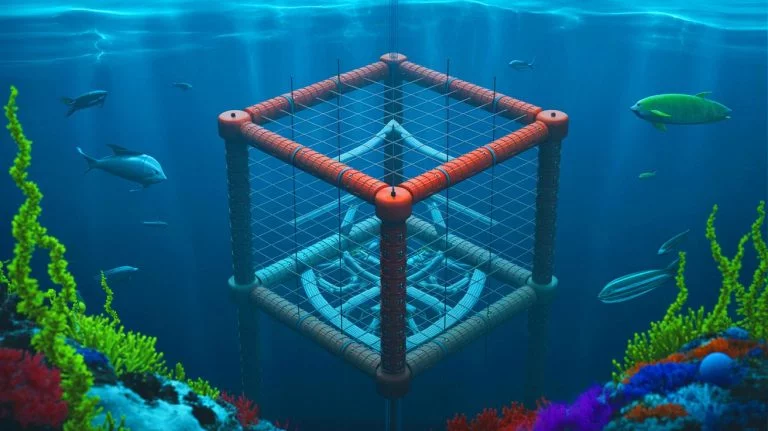| IN A NUTSHELL |
|
China is embarking on an ambitious project to construct the world’s largest neutrino detector deep beneath the ocean. Known as the Tropical Deep-sea Neutrino Telescope (TRIDENT), this advanced scientific instrument will be located 11,500 feet under the surface of the Western Pacific Ocean. Set to be completed by 2030, TRIDENT aims to unravel the mysteries of neutrinos, elusive particles that pass through matter with almost no interaction. By capturing rare flashes of light caused by these ghost particles, scientists hope to trace their origins back to distant cosmic events, potentially expanding our understanding of the universe.
The Science Behind Neutrinos
Neutrinos are among the universe’s most mysterious particles. Every second, about 100 billion of these ghostly particles pass through each square centimeter of the human body without leaving a trace. Neutrinos are produced by nuclear reactions in stars, supernova explosions, cosmic rays, and even human-made particle accelerators. Despite their abundance, they interact very little with other matter, making them incredibly challenging to detect. This elusive nature is why they are often referred to as ghost particles.
First discovered in 1956, neutrinos continue to intrigue scientists. They are second only to photons as the most plentiful subatomic particles. However, their lack of an electrical charge and nearly zero mass mean they rarely interact with other particles, which has complicated efforts to study them. By detecting and analyzing neutrinos, researchers hope to gain insights into some of the most energetic and cataclysmic events in the universe. The TRIDENT project represents a significant step forward in this scientific quest.
TRIDENT’s Ambitious Design
TRIDENT will feature an impressive arrangement of more than 24,000 optical sensors distributed across 1,211 strings, each extending 2,300 feet upward from the ocean floor. These sensors will be arranged in a Penrose tiling pattern, covering a diameter of 2.5 miles. This extensive setup will allow TRIDENT to scan an enormous volume of ocean water—approximately 1.7 cubic miles—for neutrinos. This makes it far larger and more sensitive than the current largest neutrino detector, IceCube, located in Antarctica, which covers just 0.24 cubic miles.
The design of TRIDENT not only increases the likelihood of detecting neutrinos but also enhances the precision with which their origins can be traced. By using Earth as a shield, TRIDENT will detect neutrinos from the opposite side of the planet, allowing for a comprehensive all-sky observation. This groundbreaking project aims to push the limits of neutrino telescope performance and sensitivity, opening new frontiers in astrophysical research.
The Potential Discoveries
The scientific community has high hopes for the discoveries that TRIDENT could facilitate. By capturing and analyzing the rare interactions of neutrinos with water molecules, researchers can trace these particles back to their sources, including ancient stellar explosions and galactic collisions. This ability to look back billions of light-years could provide unprecedented insights into the early universe and the forces that shaped it.
Furthermore, by studying neutrinos, scientists hope to uncover the origins of cosmic rays, which remain one of the greatest mysteries in astrophysics. These highly energetic particles strike Earth’s atmosphere, producing neutrinos in the process. Understanding cosmic rays may also offer clues about the most powerful particle accelerators in the universe, potentially revealing new physics beyond our current knowledge.
Challenges and Future Prospects
Building and operating TRIDENT presents several challenges, including the technical difficulties of installing and maintaining equipment at such great ocean depths. However, the potential rewards are significant. The pilot phase of the project is set to begin in 2026, with the full detector expected to be operational by 2030. As TRIDENT becomes fully operational, it promises to transform our understanding of the universe and the fundamental forces that govern it.
As researchers push the boundaries of particle physics and cosmology, TRIDENT stands as a testament to human curiosity and ingenuity. The project not only highlights the collaborative efforts required for such large-scale scientific endeavors but also underscores the importance of exploring the unknown. What new insights might TRIDENT uncover about our universe, and how will these discoveries shape our understanding of the cosmos in the years to come?
Did you like it? 4.5/5 (28)





Wow, this is like Ghostbusters but for the ocean! 🏴☠️
How exactly do these sensors work? I’m curious about the technology behind them.
Isn’t this just a fancy way to spy on submarines? 🤔
Amazing project! Thanks for sharing this exciting news! 🌟
Why are neutrinos so hard to detect if there are so many of them?
The ocean is full of mysteries already, now we’re adding cosmic mysteries too!
So, when do we expect the first results from this telescope?
Lol, are they going to find Atlantis while they’re down there? 🧜♂️
Is this project funded entirely by China or are there international partners involved?
Please! A “light year” is a unit of DISTANCE, not time.
Great article! I learned so much about neutrinos and their significance.
Do you think TRIDENT will outperform the IceCube detector in Antarctica?
Very cool, but isn’t it risky to have such advanced tech underwater?
Can’t wait to see what secrets of the universe TRIDENT unlocks! 🚀
Is this project controversial in any way, politically or environmentally?
The scale of this project is mind-boggling! How do they plan to maintain it?
Why is the project named TRIDENT? Does it have a special meaning?
Seems like a sci-fi movie plot! Hope it doesn’t awaken any sea monsters. 🐙
What challenges does TRIDENT face in terms of ocean currents and marine life?
Finally, a project that combines my love for space and the ocean! 🌌
Are there any potential ecological impacts of this underwater construction?
Absolutely thrilled to see where this research takes us. Good luck to the team!
What happens if a giant squid decides to make a home among the sensors?
Can’t help but wonder, what if they find something they weren’t looking for?
Does this mean we’re closer to understanding dark matter?
Do the optical sensors require a lot of maintenance due to saltwater exposure?
Is there any collaboration with other countries on neutrino research?
Let’s hope the project stays on schedule. Science can’t wait! ⏳
How do they ensure the data won’t be tampered with or misinterpreted?
Thanks for the detailed write-up! Looking forward to more updates on TRIDENT!